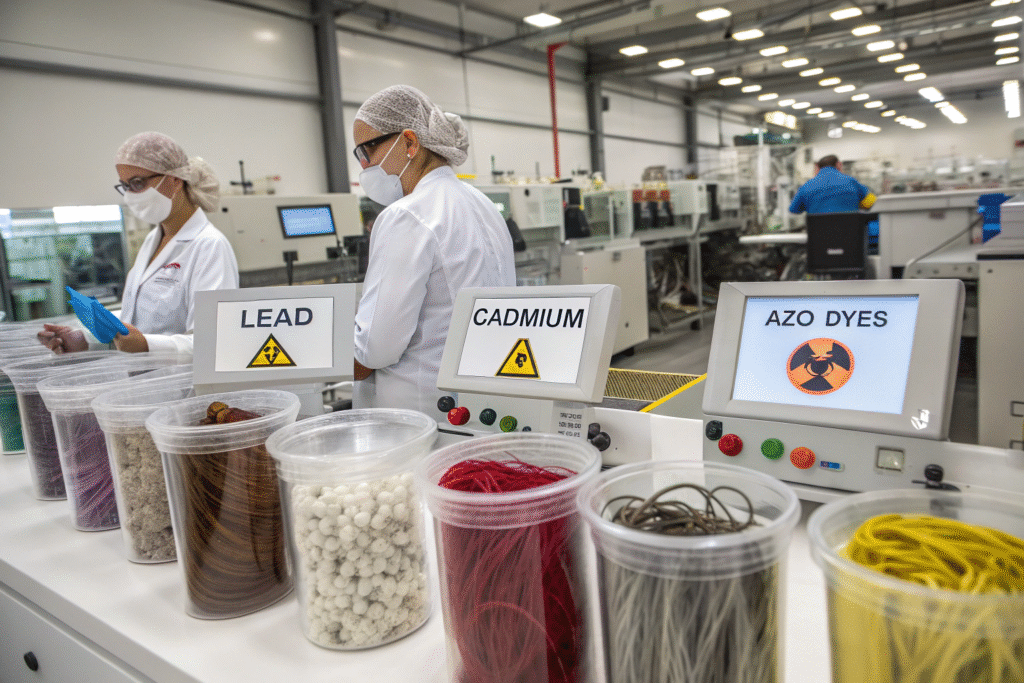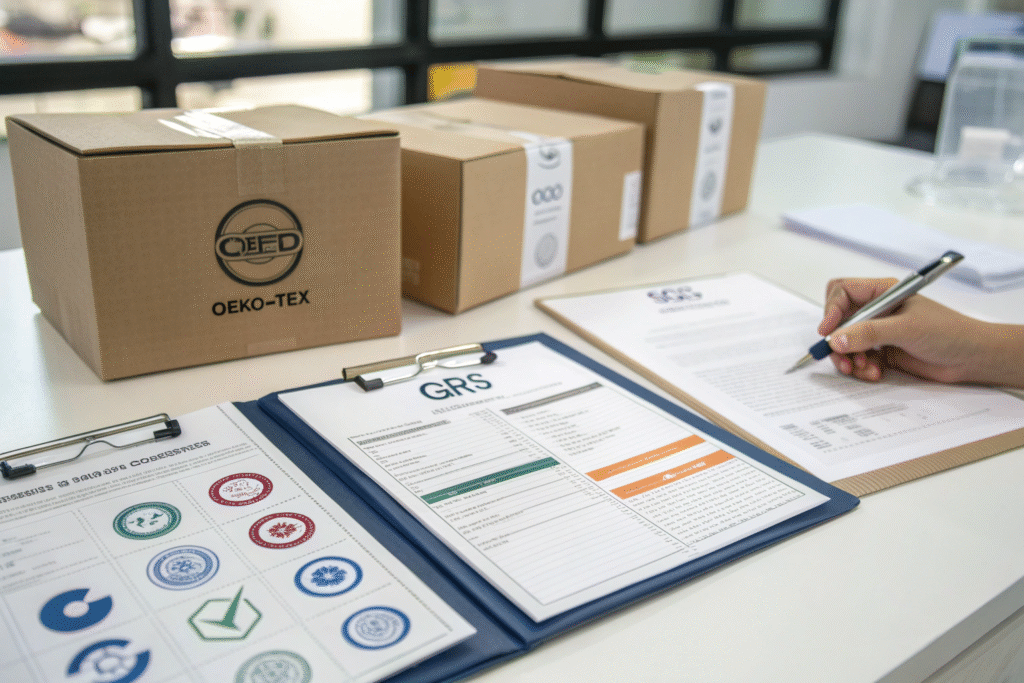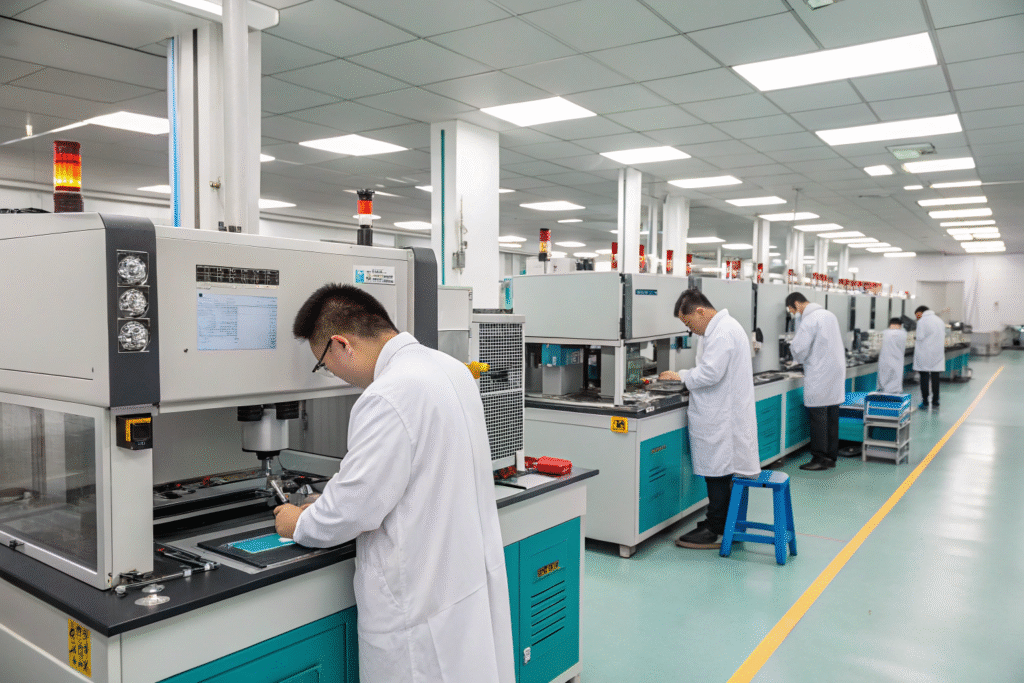Hair accessories may seem simple at first glance, but behind every elegant pearl clip or boho-chic scarf headband lies a strict process of material verification. For international buyers and retail brands—especially those from the US, EU, and Russia—ensuring that every product is safe, durable, and compliant is critical. So, what kind of material testing do professional hairpin factories like HairAcc in China actually perform?
Professional hairpin factories conduct a wide array of tests, including tensile strength analysis, chemical safety checks, colorfastness assessments, and rust resistance evaluations to ensure compliance with global safety standards and buyer expectations.
Many wholesale buyers, particularly from the EU and the United States, have strict import regulations. If a factory cannot prove compliance through reliable testing and documentation, entire shipments can be rejected. That’s why material testing isn’t optional—it’s a core part of the production process that builds buyer trust and ensures long-term cooperation.
What Safety Tests Ensure Chemical Compliance?
Strict chemical testing is non-negotiable for international trade.
Chemical safety testing for hairpins includes screening for hazardous substances like lead, cadmium, phthalates, azo dyes, and formaldehyde—common requirements for US CPSIA and EU REACH regulations.

How Are Heavy Metals Like Lead and Cadmium Detected?
Factories like ours use XRF (X-Ray Fluorescence) and ICP-OES (Inductively Coupled Plasma Optical Emission Spectroscopy) to test for heavy metals in painted surfaces, metallic clips, and coatings. This ensures compliance with CPSIA standards for US markets and REACH thresholds for EU countries. We also conduct periodic audits with SGS or Intertek labs to maintain accuracy.
Heavy metals like lead can be especially harmful if found in colorful paint on metal parts. By conducting in-house and third-party verification, we prevent legal issues and protect your brand reputation.
Do Hairpin Factories Test for Azo Dyes and Formaldehyde?
Yes, especially for textile-based accessories such as scarf headbands, scrunchies, and turbans. Our cooperating dyeing factories follow OEKO-TEX Standard 100 testing, which includes azo dye screening and formaldehyde limits. These tests are vital to pass EU import checks and guarantee skin-friendly products for end-users.
Buyers in Germany, the Netherlands, and Scandinavia often require more stringent safety certifications. We proactively test batches for these chemicals and can provide reports for each PO if required.
What Performance Tests Validate Durability?
Hair accessories must withstand real-world usage—opening, stretching, wear, and even moisture exposure.
Factories test tensile strength, rust resistance, clasp retention, and UV exposure to validate long-term performance under normal and extreme conditions.

How Do You Test a Hairpin’s Tensile Strength?
We use tensile testing machines to measure how much force a claw clip, elastic, or metal pin can take before deforming or breaking. This ensures clips hold hair tightly without snapping. For example, our plastic claw clips must pass a 10N (newton) threshold test to meet HairAcc standards.
We also run repetitive stress simulations where clips open and close over 3000 times to verify lifecycle performance. This is especially important for large retail buyers who expect uniform durability across all batches.
Is Rust Testing Required for Metal Hair Accessories?
Absolutely. Rusting not only affects aesthetics but also weakens the structure of bobby pins, hair chains, and clasps. We perform 24-hour salt spray tests on all metal components, simulating accelerated corrosion conditions.
If a batch fails, we adjust electroplating or surface coating thickness to enhance resistance. For Russia and Northern Europe, where humidity and cold can increase corrosion risk, this test is a must-have.
How Is Colorfastness Ensured for Fabrics and Coatings?
From silk headscarves to satin scrunchies, color retention is key to visual appeal.
Factories test fabric colorfastness through dry and wet rubbing, washing, and UV exposure, ensuring longevity and compliance with buyer expectations.

How Is Rubbing and Washing Colorfastness Evaluated?
We conduct ISO 105-X12 dry and wet rub tests using crockmeters to assess whether fabrics bleed when touched or rubbed. Then, we follow up with ISO 105-C06 laundering tests. Our satin scrunchies and velvet bands maintain color grade 4-5, which is ideal for international markets.
Color bleeding not only ruins user experience but can damage nearby clothing. We ensure that all fabrics and prints can survive regular use, cleaning, and even sweat.
Do You Test for UV Fading Resistance?
Yes. For headwear worn outdoors, especially in sunny markets like California or Spain, we use UV weathering chambers to simulate 24-hour sunlight exposure. According to AATCC Test Method 16, materials must maintain at least 85% of their original color to pass.
We also customize pigment formulations with our dyeing partners to increase UV resistance for bright or neon shades, popular among Gen-Z-focused e-commerce brands.
What Third-Party Certifications Back Test Results?
Testing is only as reliable as its traceability and transparency.
Hairpin factories partner with third-party testing labs like SGS, TUV, and Intertek to validate in-house test results. Certifications like OEKO-TEX and GRS help ensure quality and ethical sourcing.

What Are the Most Common Certifications Required?
For textile components like cotton turbans and silk scarves, OEKO-TEX Standard 100 is widely accepted. For sustainable buyers, GRS (Global Recycled Standard) certification from Control Union validates use of recycled materials in elastic bands and fabric trims.
We work closely with clients to match their target markets’ standards and can provide test documentation at the quotation stage. For example, Walmart and Target buyers often require proof of CPSC and AQL protocols.
Can Buyers Request Batch-Specific Test Reports?
Yes. Upon request, we provide digital copies of all test results tied to production batches, including raw material lot numbers. For custom hairpin developments or promotional orders, we include compliance documentation as part of the final inspection report.
This level of transparency reassures clients that our quality control process goes beyond just final visual checks—it covers material-level assurance from start to finish.
Conclusion
Material testing is the foundation of a professional hair accessory factory’s credibility. It protects your brand from recalls, improves end-user satisfaction, and builds long-term trust between buyers and manufacturers. From safety and durability to color and documentation, every aspect is meticulously validated at HairAcc.
If you're sourcing headwear or hair accessories and want a reliable, compliant production partner, don’t hesitate to contact Shanghai Fumao. Reach out to our Business Director Elaine at elaine@fumaoclothing.com for catalogs, test reports, or to develop your custom head accessory line with confidence.









